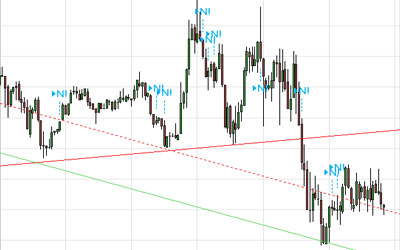The currency markets have been simultaneously driven by two themes as of recent, however independently the duration of these market motives vary significantly. Firstly, there are the concerns of inflation which have been felt globally since the middle of last year, and more recently accelerating in tandem with higher energy costs. It appears though that the largest Asian economies; China and Japan, has been somewhat insulted from these inflationary pressures. As for the second market motivator, its development first emerged this year when Russia began a series of military exercises near the Ukrainian boarder. Any release of unexpected news or data on either of these themes, are able to push and pull the markets to highs and lows at will.
 
When attempting to contain rising inflation, the primary mechanism used by central banks is adjusting interest rate levels. Since global economies had been curtailed for the best part of two years, interest rates had been at near zero levels in order to stimulate growth. As a consequence, rate hikes have already been implemented around the globe. It is now only a matter of time that the central banks from countries which are lagging, soon catch up to the likes of Norway, New Zealand, and the UK. There is a pertinent argument though, that economies which have more recently returned to the pre-pandemic levels, such as the Eurozone, will not need to necessitate a hike so quickly. Likewise, Australia is also pushing against early hikes as well as the US and Canada.
 
On the geo-political side, western nations continue to push the rhetoric that Russia is on the verge of instigating a war in Europe. European leaders are showing support for the Ukraine and uniting behind NATO leadership, whilst holding out for a resolution through diplomacy with the Kremlin. The possibility of an open channel for talks between the US and Russia has eased tensions, however the markets still respond on the side of caution. Risk appetite is muted, which plays into the strength of the Dollar. Other safe haven currencies like the Swiss Franc have also gained, however the overall price volatility movements of the currency majors is reduced. As Russia continues to push it influence past its boarders into previously Soviet satellite territories, the markets adjust to abating risk appetite.
FX Multi Core Trade Overview
14.02.22 – 18.02.22

| Total | |
|---|---|
| Total Buy Trades | 58 |
| Total Sell Trades | 47 |
| Total Trades | 105 |
What is FXMC?

FX Multi Core (FXMC) is a balanced, diversified portfolio from a number of different strategies, the portfolio is distributed across 4-5 trading styles which execute to its own risk/reward profile. The strategies are traded actively, and the allocations are monitored by strict risk management procedures to control trading exposure, drawdown levels, leverage and position limits.
The post <h5>FX Market View #39</h5> <h3>Inflation and Potential of War Driving Markets</h3> appeared first on JP Fund Services.
Tradersdna is a leading digital and social media platform for traders and investors. Tradersdna offers premiere resources for trading and investing education, digital resources for personal finance, market analysis and free trading guides. More about TradersDNA Features: What Does It Take to Become an Aggressive Trader? | Everything You Need to Know About White Label Trading Software | Advantages of Automated Forex Trading




































